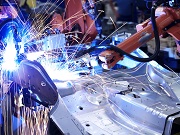Statistical methods reinforcing semiconductor manufacturing – review and discussion of U.S. Semiconductor Industry Qualification Plan
Outline: A quick summary of the Qualification Plan, how statistical methods fit in each of the three stages of the Qualification Plan, with actual case reference, and quick insight/discussion on the contribution of statistical methods. Focusing on the substantiated contribution (vs. unverified, theoretical suppositions) of each of the statistical methods.
Relevance of Statistical Methods in Manufacturing: Even in today’s high-tech manufacturing environment with very precise measurements and powerful processing capabilities arising from the advanced technologies, the demand for stricter equipment baseline settings, the discovery of new processing techniques to solve emerging problems, a thorough understanding of the process and equipment capacities, as well control of the high-tech manufacturing process is still relevant. For the majority of industries and do not employ high precision equipment, traditional statistical methods should live strong and well for a long time.
Three areas that we focus on to achieve immediate impacts for tech businesses are:
- Gauge study. High-precision equipment can achieve even better goals
- Minimizing experiment runs for expensive experiments. Design experiments to suit specific production environments. Optimization of a process. Discover the cause of failures or defects.
- Measure and control process and equipment capacity
We will discuss the ways to statistical methods that would improve each of the three areas with actual case examples. In the case example, we will emphasize how the statistical methods accelerate the efforts, make impossibles possible, saved expenses and deliver better products. Below is a diagram of an ideal manufacturing qualification plan should look like, each of the three stages involves many of the statistical techniques we will discuss in this sequence of articles.

